Outstanding fall color and pollinator attraction make this U.S. native a win for the ornamental arrangement. Its naturalistic, informal habit with adaptable cultivars suit the mixed border and woodland composition. Itea performs across various growing conditions with ease, even in challenging wet or eroded sites.
Sweetspire boasts unique pendant blooms with a light fragrance and weeks of flowering. Dark, willowy leaves turn brilliant shades of gold and burgundy in autumn. With its ornamental appeal, low maintenance needs, and ecological benefits, sweetspire is easy to incorporate into the display for seasonal interest and site enrichment.
Itea virginica ‘Sweetspire’ Overview
|
|
|
What is Sweetspire?
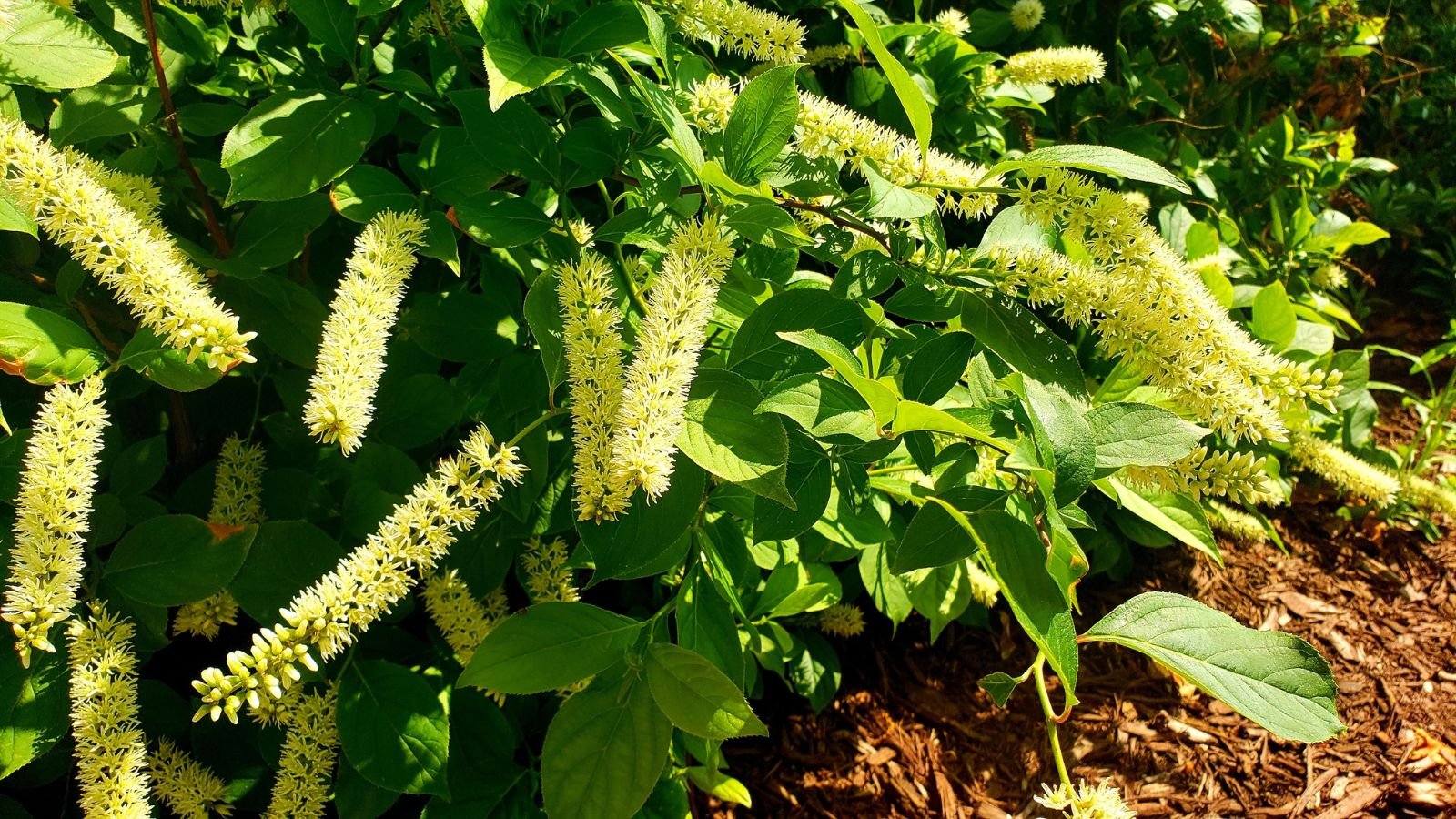
Virginia sweetspire’s ornamental features include fragrant, drooping blooms and spectacular fall color. The deciduous shrub has an upright, rounded habit and slightly arching branches.
Long racemes of tiny white flowers ornament the shrubs from late spring through early summer. The flowers attract butterflies, hummingbirds, bees, and other pollinators. The seeds that follow provide cool season forage for songbirds.
Fall color is a main attraction, with foliage turning shades of red, gold, purple, and orange. Arrange them as a group or mass for a bloom and autumnal display as a shrubby ground cover. They also complement mixed borders, foundations, rain gardens, open woodlands, and naturalistic arrangements. Pair them with other native woodlanders like coral bells, ferns, carex, and iris. Partners like oakleaf and panicle hydrangea, aronia, beautyberry, and buttonbush are showy and have similar cultural requirements.
Itea tolerates heavy shade, erosion, wet soils, and clay – situations other plants may find challenging. They’re pest and disease-resistant, and deer tend to leave them alone.
Of 18 species, Itea virginica, the North American native, is one of three cultivated ornamentally. It grows throughout the central and eastern U.S. I. ilicifolia and I. yunnanensis are evergreen and indigenous to China.
I. virginica is valuable in itself, but you’ll likely find its award-winning cultivars and selections that boast improved form and flowering. The underutilized shrubs are worthy of a spot in the garden and have versatile applications.
Characteristics
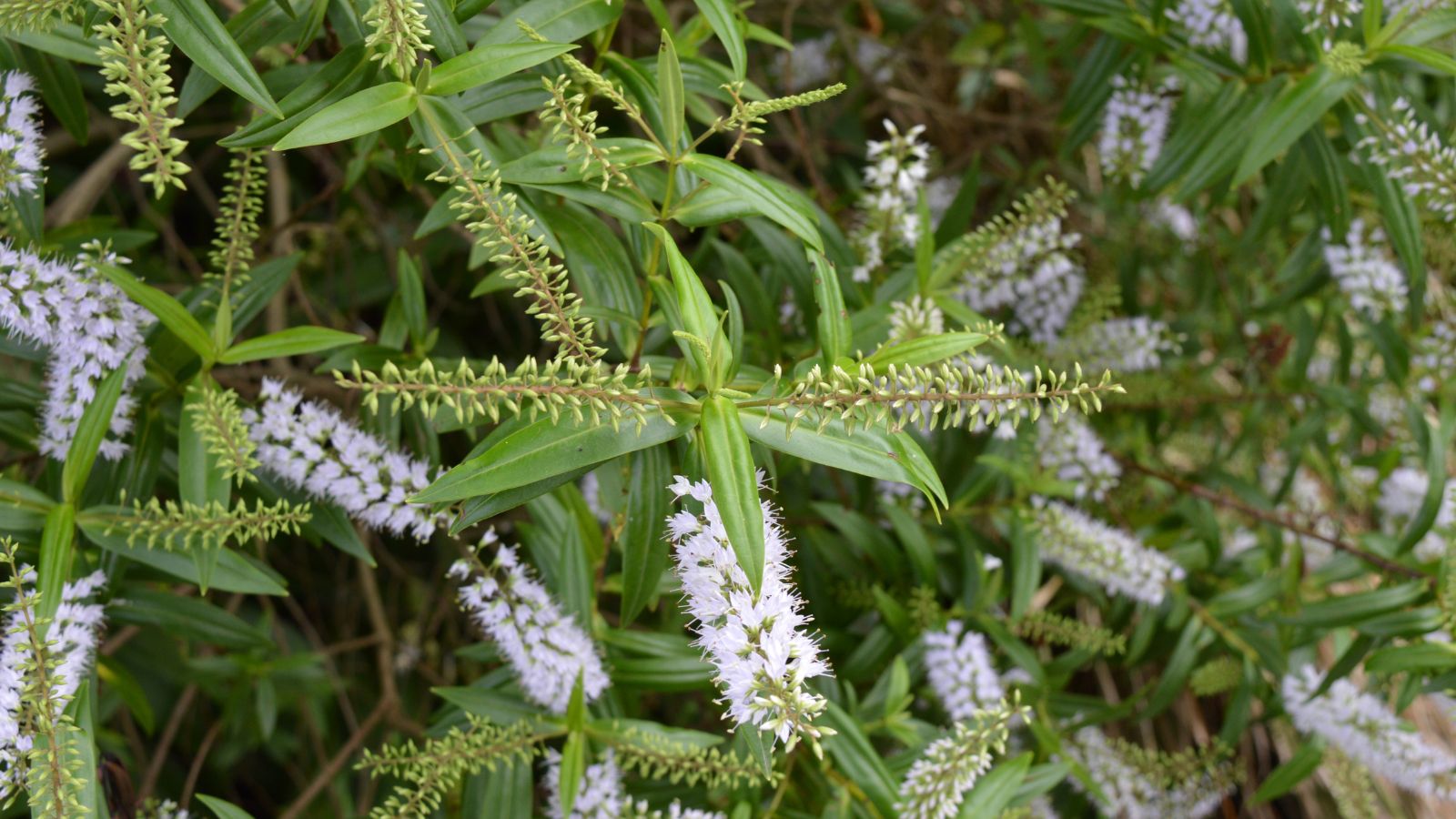
Sweetspire’s pendant flower clusters hang from the tips of stems in long ornaments. The fragrant racemes of petite, starry white flowers are three to six inches long. Coppery brown seeds develop post-bloom, which are edible and enjoyed by birds in fall and winter.
Dark green, willowy leaves are oval-shaped and reach one to four inches long. The vibrant autumnal foliage stays on the stem late into the season and persists into winter. The shrubs are semi-evergreen in mild climates, with total leaf drop as temperatures fall to 15-20°F (-9 to -7°C).
The natives grow to six feet in the wild but remain more compact in the home landscape. They form colonies through rooting offshoots in prime conditions.
Native Area
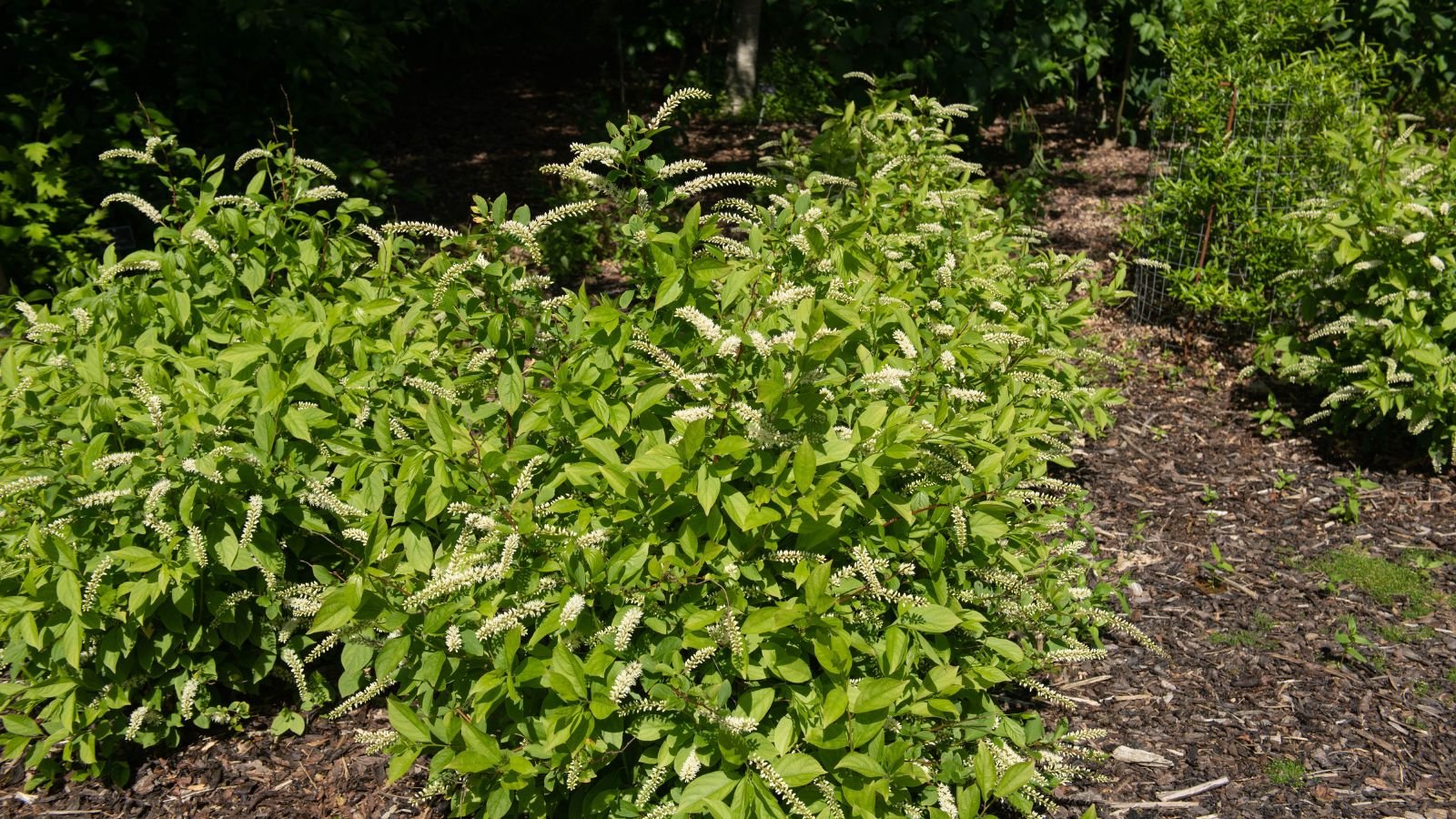
I. virginica occurs naturally from New Jersey to Florida, west to Missouri and Illinois, to Oklahoma, and Texas. It grows along wooded stream banks, in moist forests, wet pine barrens, and pond margins.
Planting
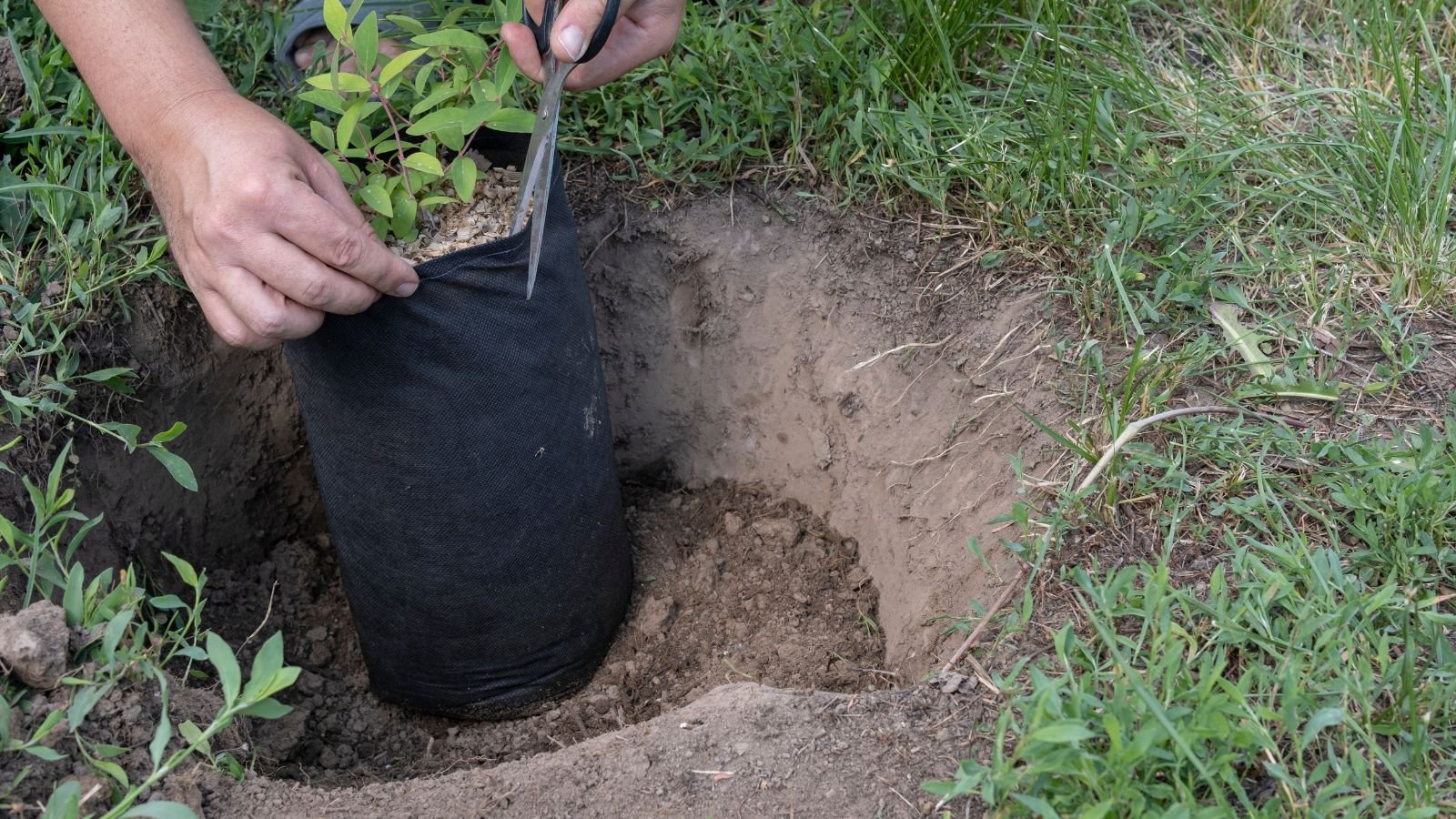
When planting, space the specimens two to three feet apart to allow room for mature growth. Dig a hole two times larger than the nursery pot and loosen the surrounding soil. Place the crown slightly above the soil level and water it deeply.
Water regularly during the growing season for consistent moisture. Add a three-inch layer of mulch to insulate the roots and retain moisture (keeping it off of stems to prevent fungal problems).
Transplanting
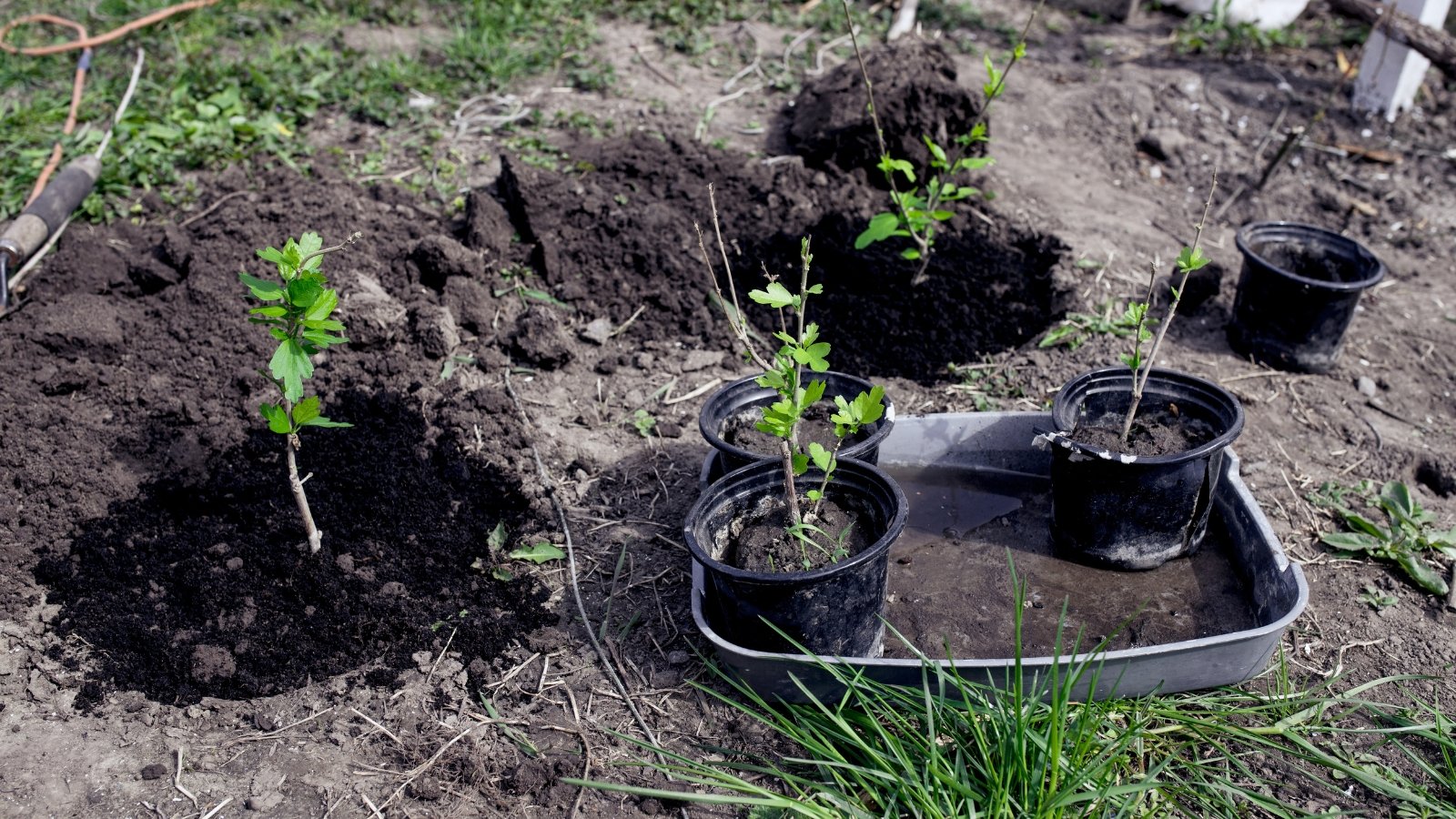
Fall and spring are the best times for planting, with cool temperatures and seasonal moisture. Mild conditions give roots time to establish before winter and summer temperature fluctuations. For the least stress, avoid planting in frozen or waterlogged conditions and extreme heat or dryness.
How to Grow
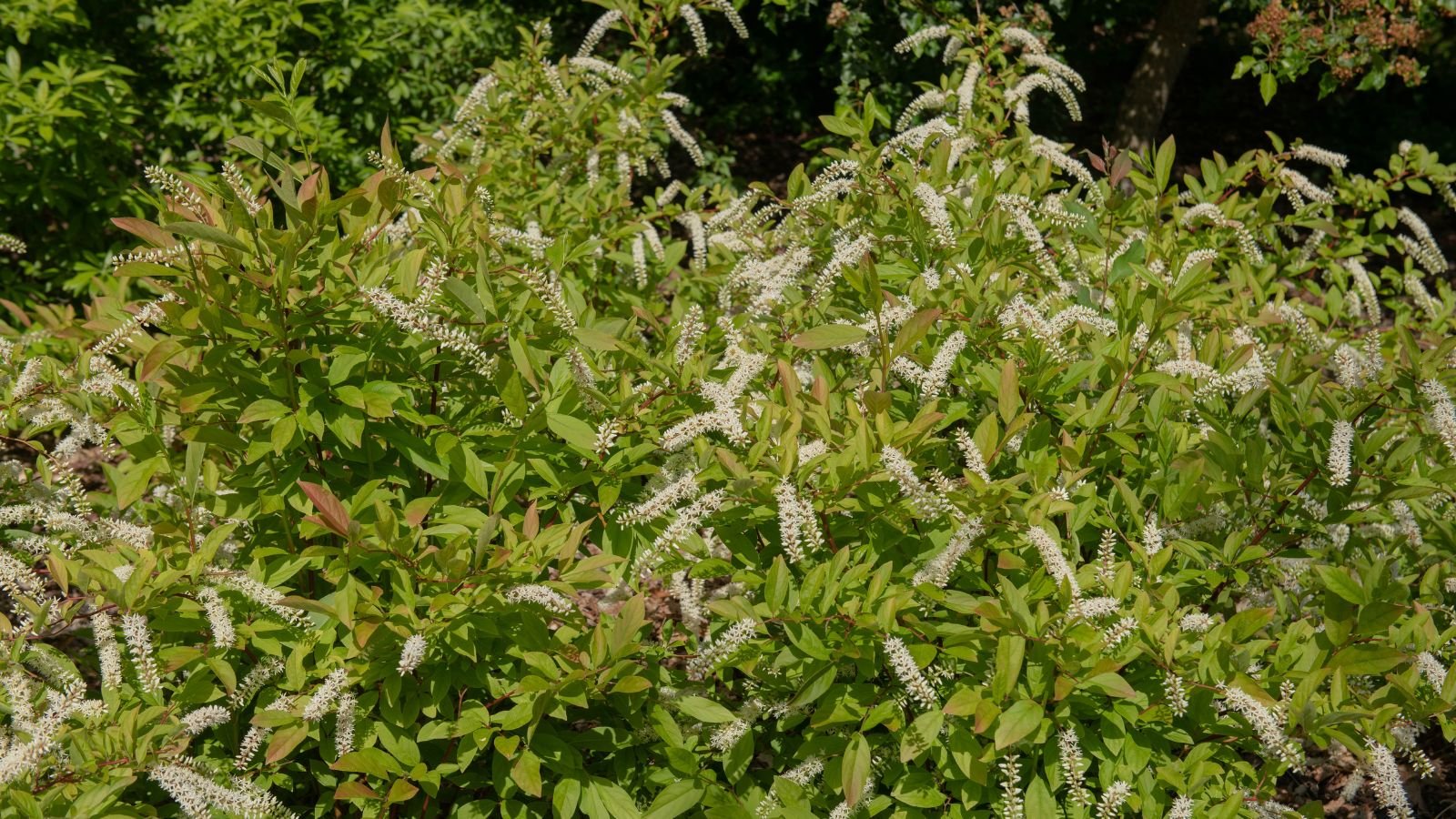
The carefree, low-maintenance natives do best with a few key cultural requirements in place.
Light
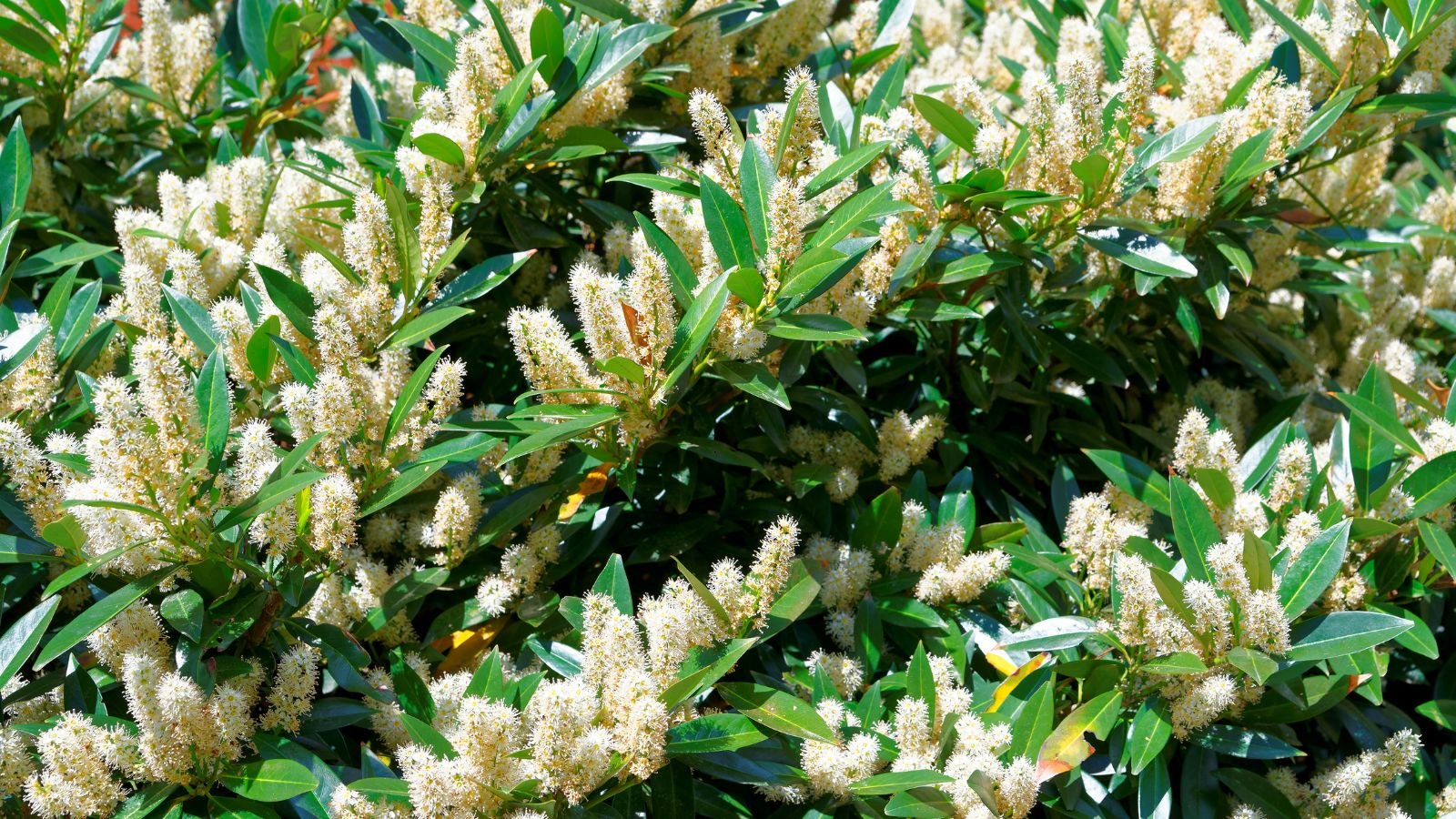
Itea grows best in partial shade (four or more hours) but can also handle full sun in some areas. The adaptable shrub also adapts to deeper shade, though fall color and flowering are best with at least partial sun exposure.
Water
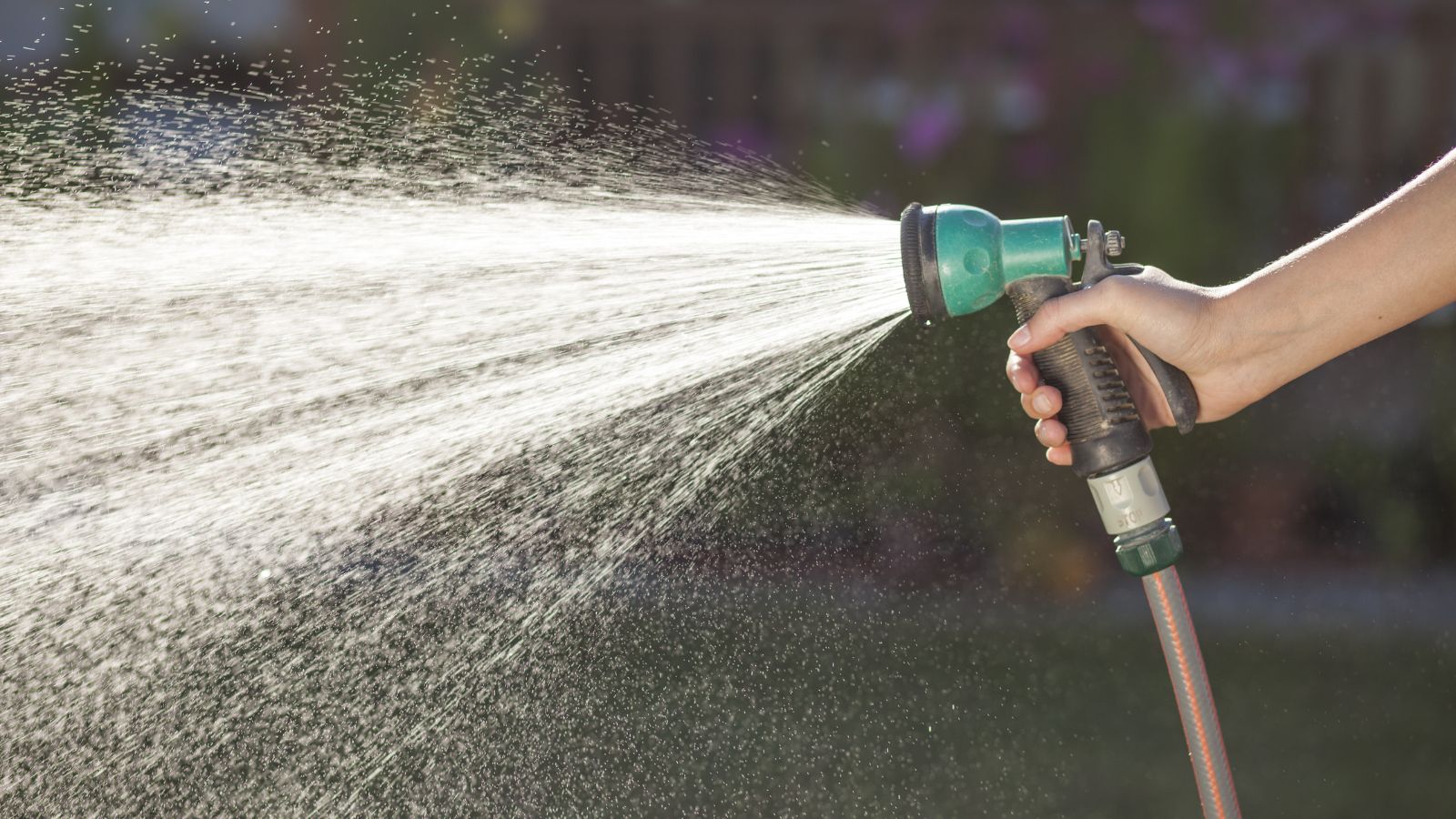
Virginia sweetspire grows best with consistent moisture. It tolerates brief periods of flooding and wet zones. It also withstands short dry spells but struggles in prolonged drought conditions.
The woody shrubs adapt to garden beds outside of wet areas with regular irrigation. Once established, about an inch of water per week is sufficient, with more needed during hot or dry situations.
Soil
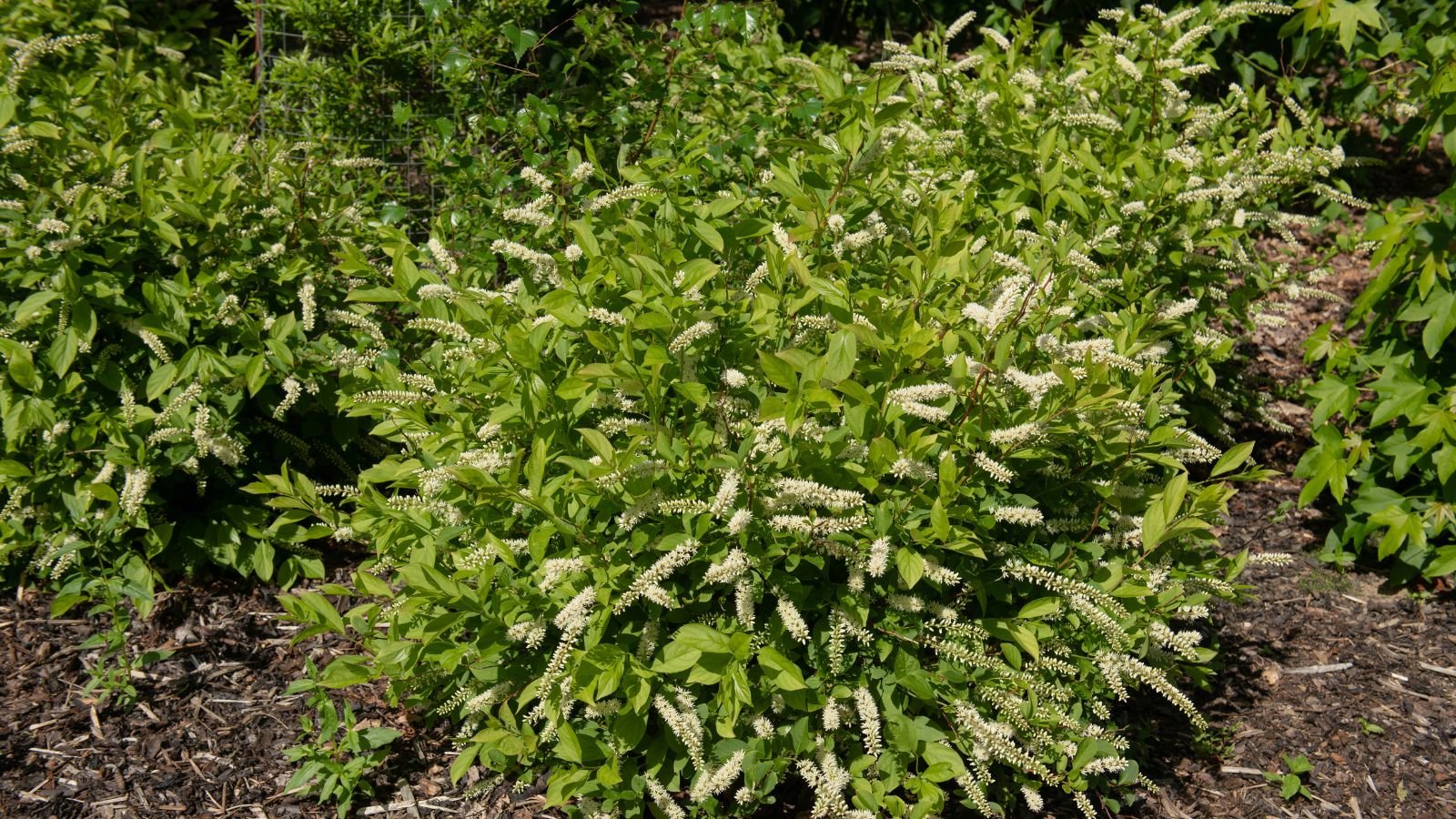
The durable shrub grows in various soil types, including clay, but performs best in organically rich loams. It isn’t picky about pH levels, though slightly acidic is optimal. Average, medium to wet, well-drained soils are best.
In poor soils like clay and sand, amend with compost at planting. Compost improves aeration, moisture retention, drainage, and nutrition. Adding a compost layer to the garden bed each spring refreshes these benefits for the growing season.
Temperature and Humidity
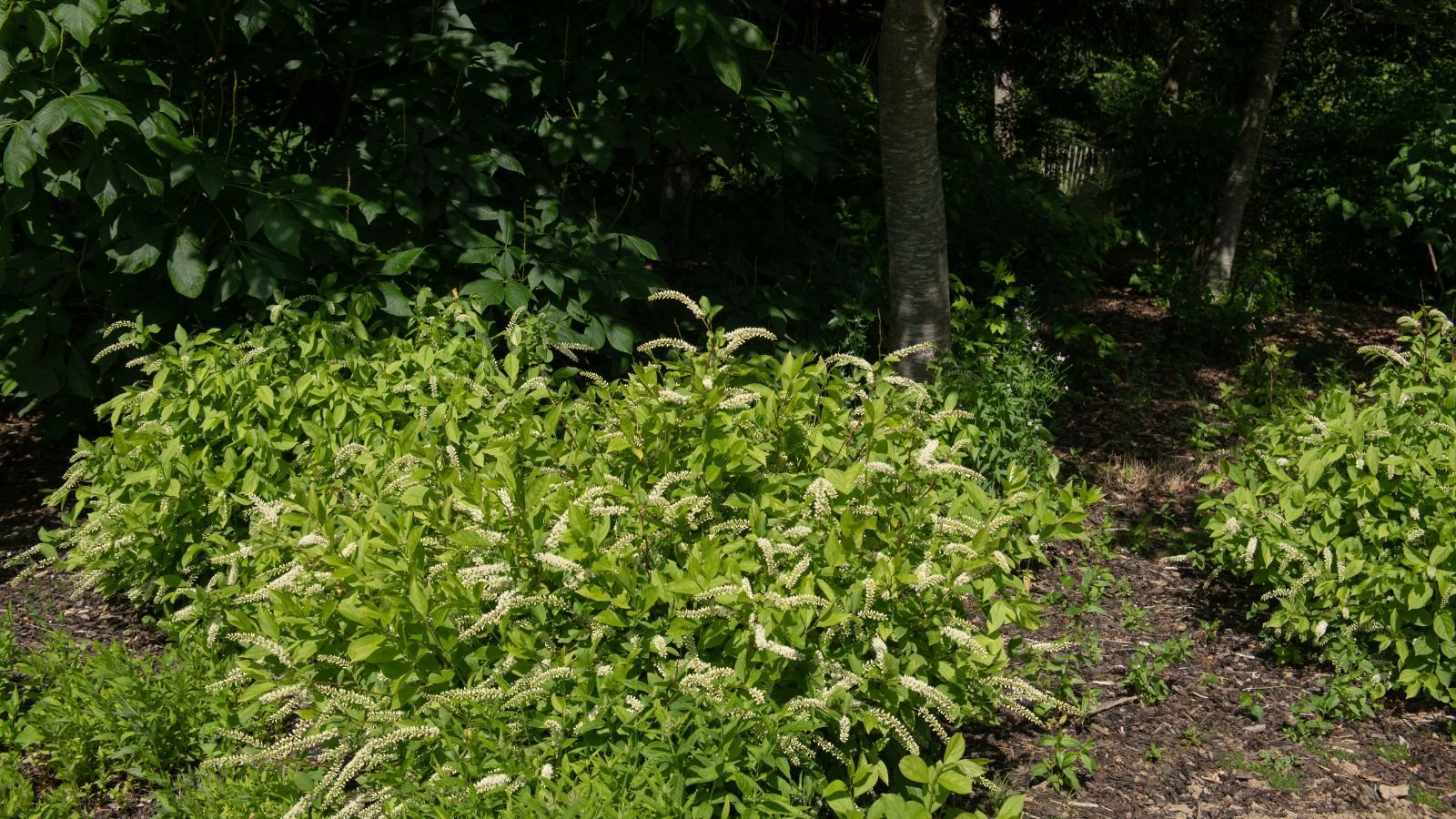
Sweetspire shrubs are heat and humidity-tolerant and cold-hardy down to USDA zone 5. They benefit from extra mulch in the fall in the lowest zones.
Fertilizing
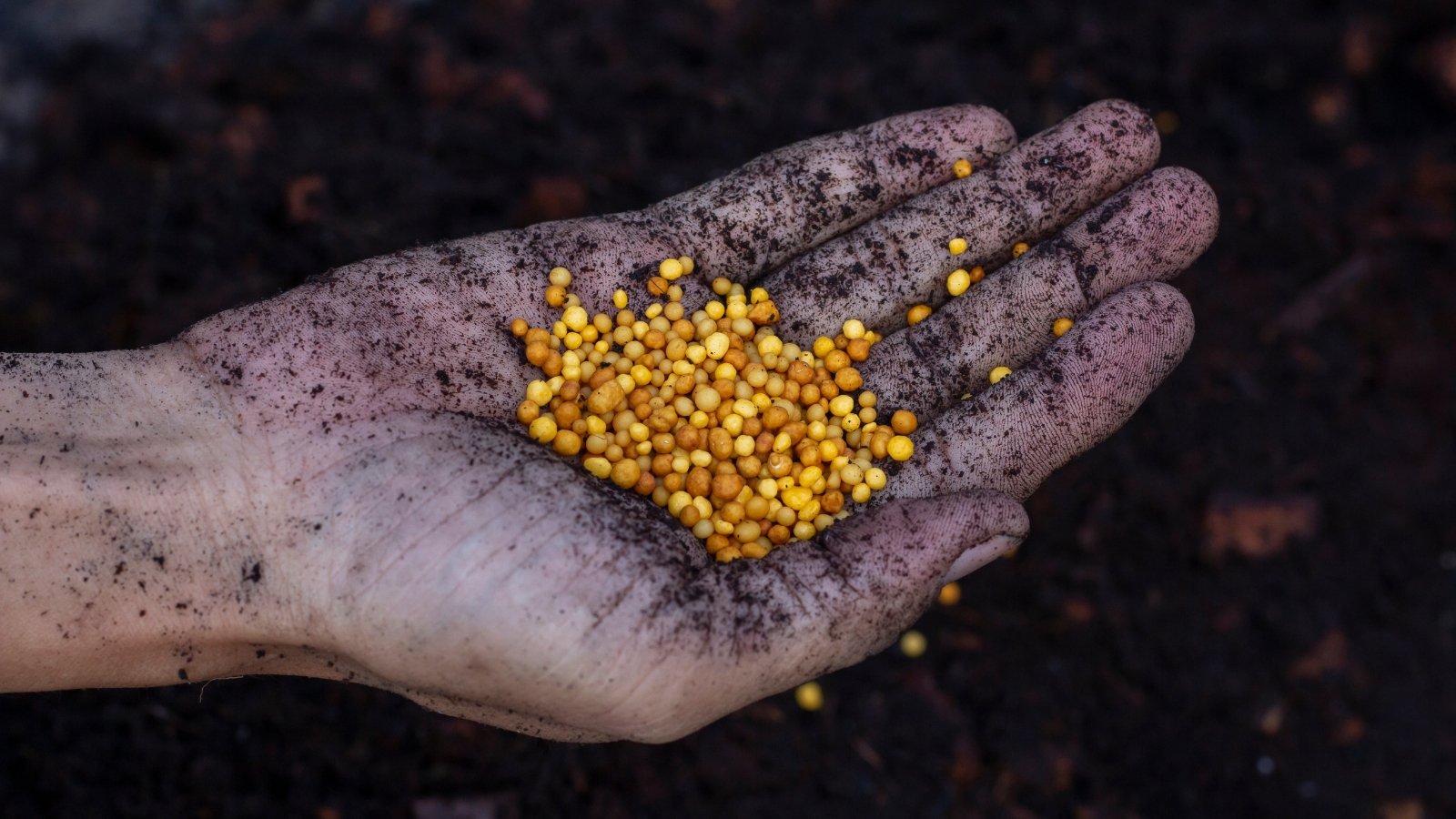
With nutrient-rich soils, Itea doesn’t require additional fertilizers to thrive. Too much fertilizer leads to weakened specimens.
If you opt to fertilize due to poor soils, apply a balanced, organic, slow-release, granular like 5-5-5 in early spring before new growth emerges.
Maintenance
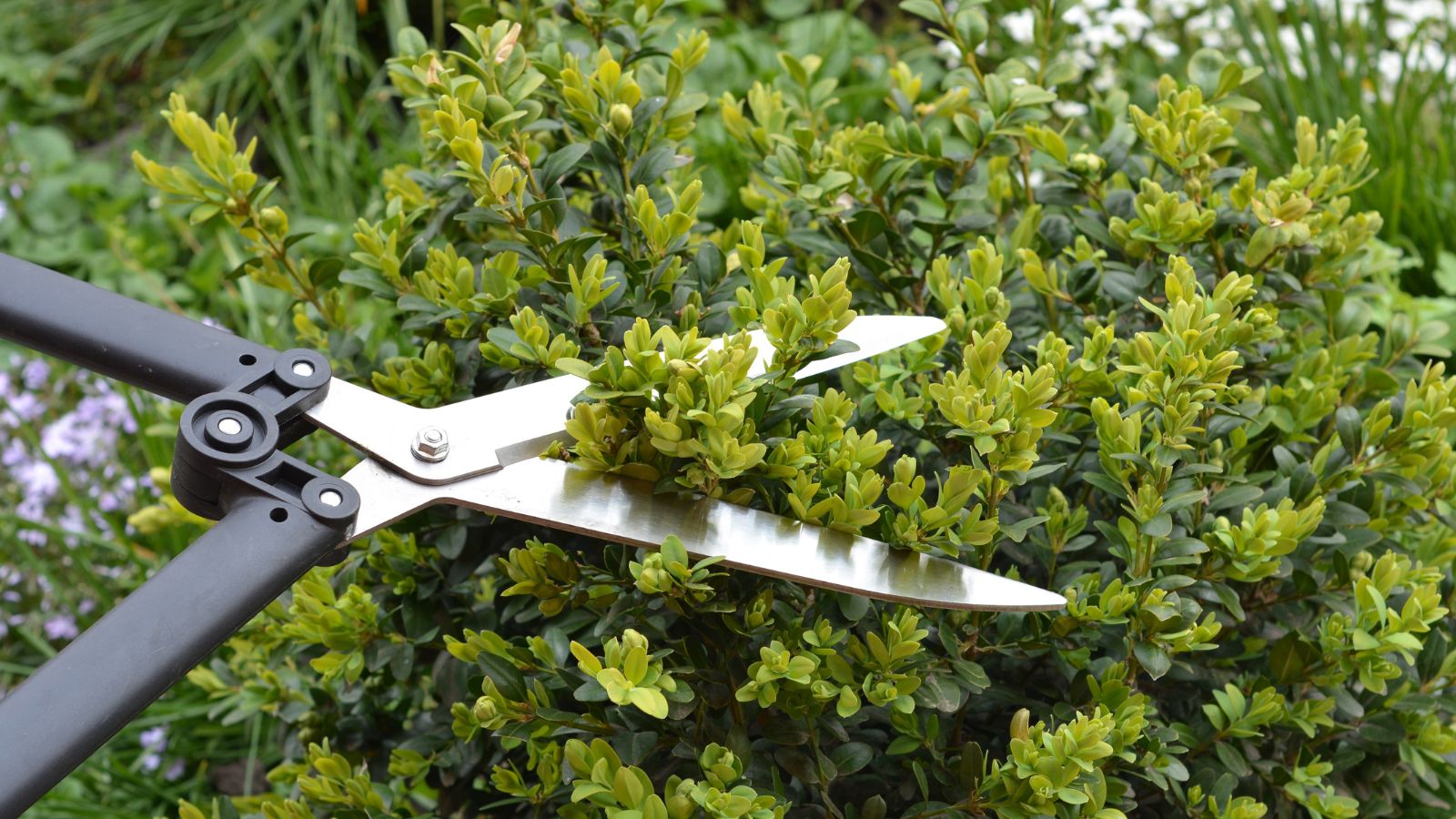
Other than moisture and sunlight requirements, these ornamentals are low-maintenance. If you notice unwanted spreading through rooted offshoots, keep the shrub in bounds by cutting them from the original plant with a spade.
Prune as needed for shape and size after flowering. Sweetspire blooms on the previous season’s wood, and cutting post-bloom lets new growth establish before winter for bud set.
To rejuvenate growth, cut back thick branches to just above the crown. New growth will emerge and take their place.
Propagation
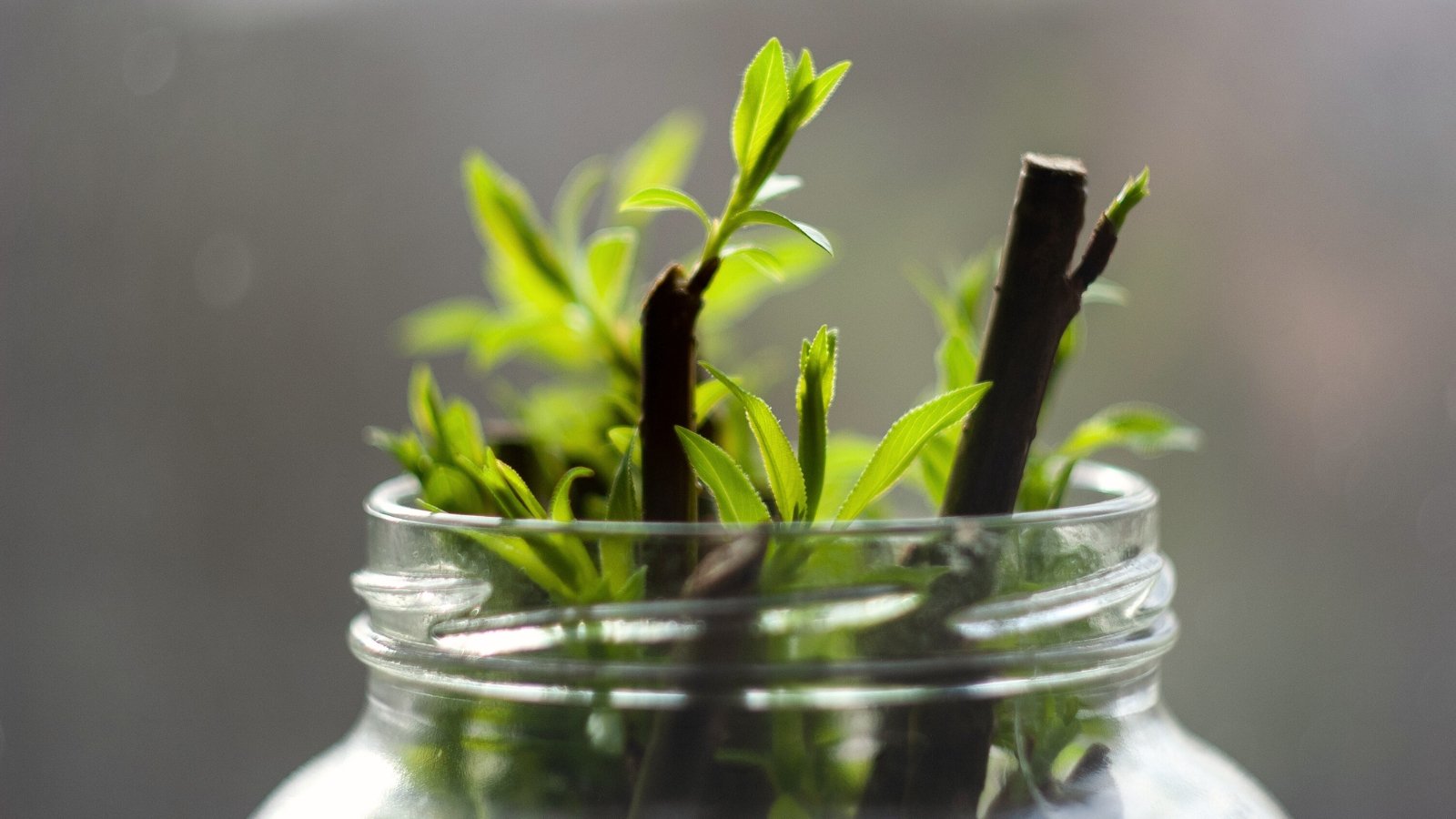
Itea propagates most easily by dividing rooted offshoots and stem cuttings. Take cuttings in May through September for rooting in about four weeks. Fall is a good time to divide rooted offshoots. The patient gardener can opt to sow seeds. Make sure your variety isn’t protected by a plant patent before propagation.
Cuttings
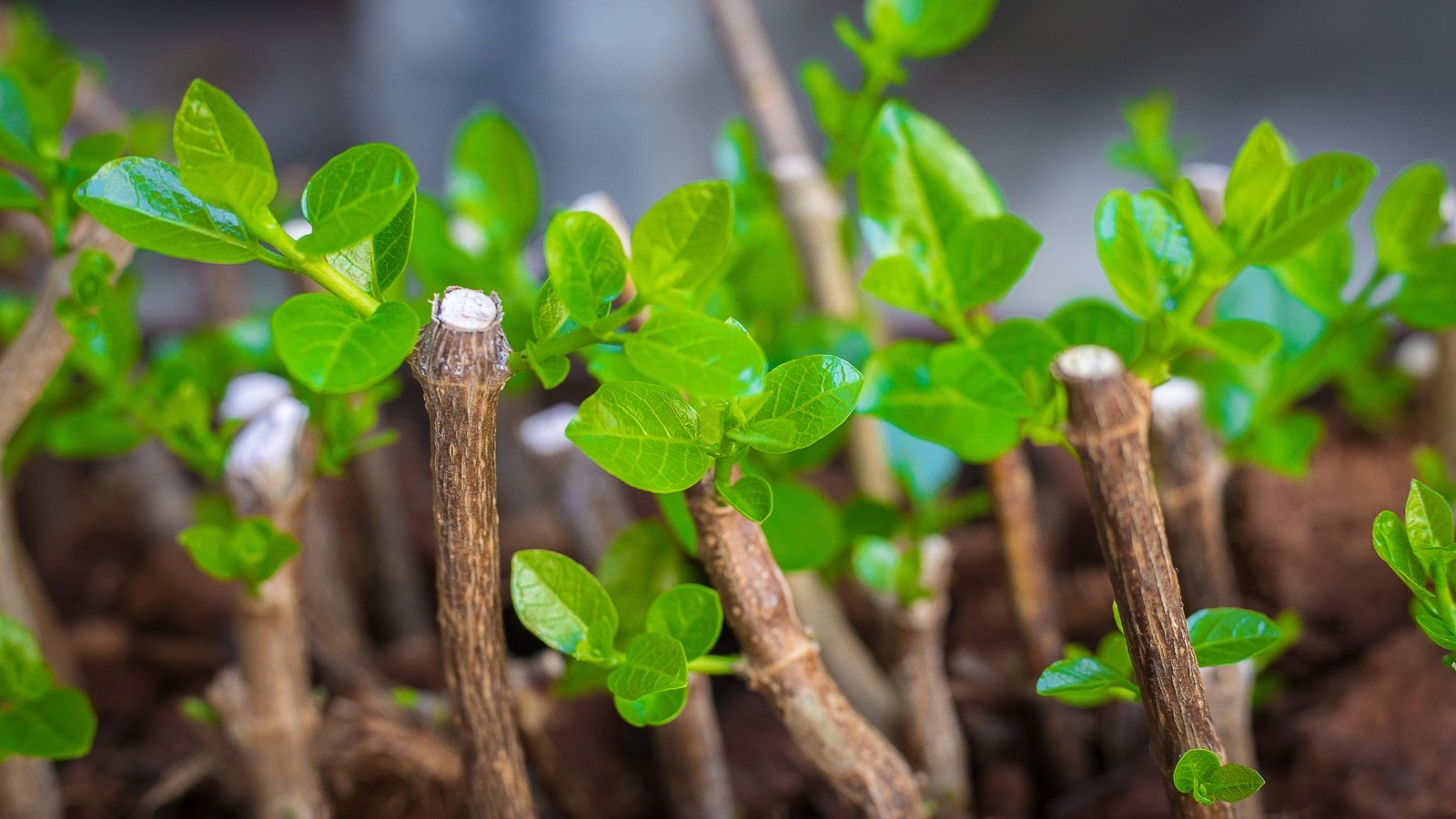
With a few steps, propagating from cuttings is a streamlined process. Here are steps for best practices in taking cuttings. Remember to do so as the plant is actively growing between May and September:
- Cut a four-to-six-inch piece of healthy, pliable stem.
- Remove the foliage from the bottom ⅔ of the cutting (keeping at least two leaves intact). If the remaining leaves are large, cut them in half. Keep cuttings moist until ready to pot.
- Optional: moisten the cutting and generously coat the lower stem with rooting hormone. Tap off any excess rooting powder.
- Plant the stem in at least two inches of moist, well-draining potting mix.
- Place the pot in a bright, warm location, avoiding direct sunlight.
- Water or mist as needed, keeping the soil evenly moist.
- When the cutting resists a gentle tug, roots are in place and ready to be repotted.
- Plant the cuttings in four-inch pots and move them outside in mild conditions. New plants will be tender.
Root Division
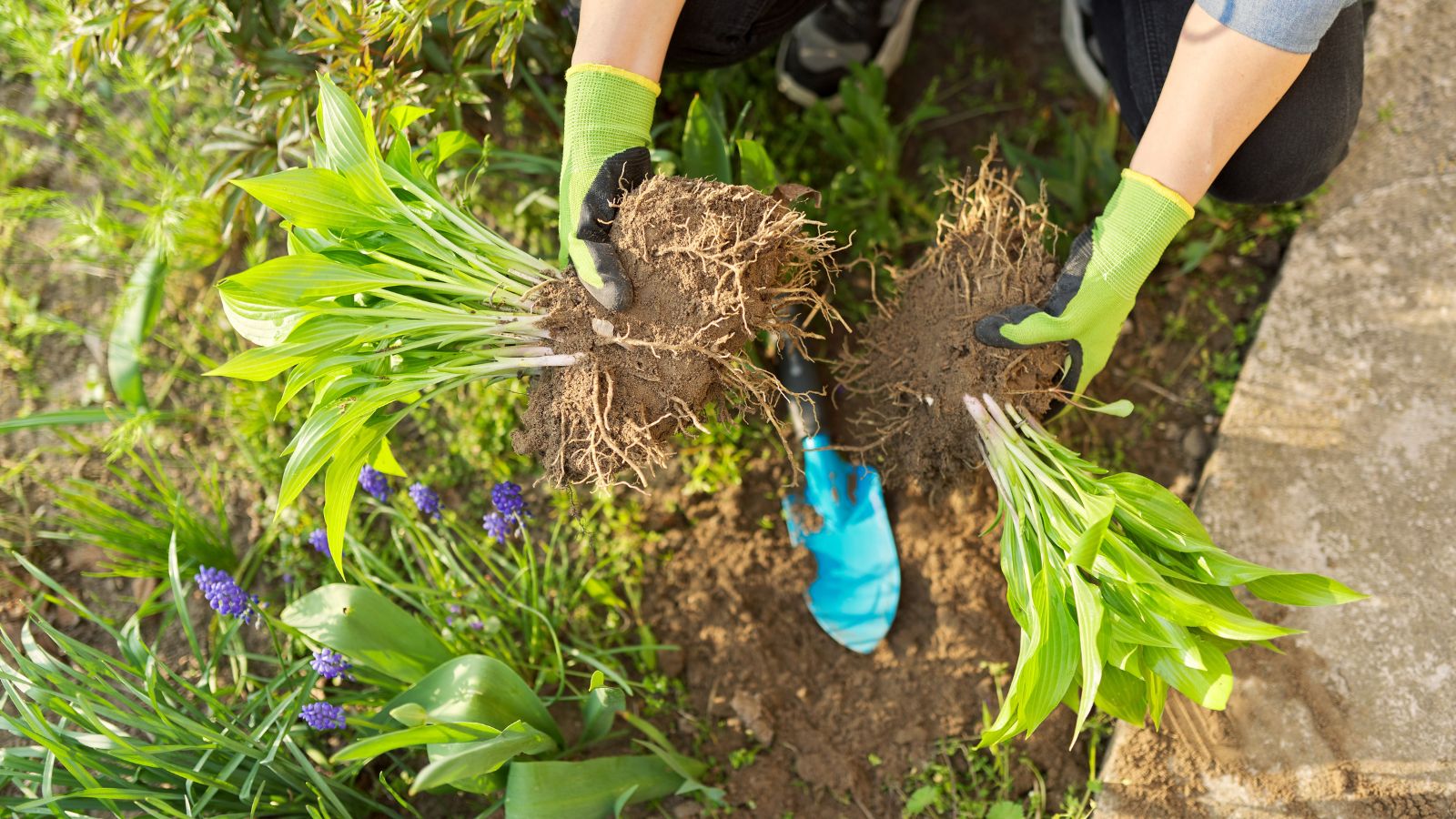
Division from offshoots is easy if your shrub is showing new growth popping up from its roots. Suckers are the offshoots that arise from the plant’s base. Division involves separating them from the mother plant and transplanting them into containers or their new garden location.
To divide rooted offshoots:
- Loosen the soil around the shoot with a fork or spade and lift it gently. Keep attached roots intact.
- With the spade, pruners, or sharp blade, cut off the suckering growth with fibrous roots. Replace the soil around the mother plant.
- Trim long stems in half so they can absorb nutrients and develop a shrubby habit.
- Tuck the division in its pot or garden bed and water regularly as roots develop.
Growing From Seed
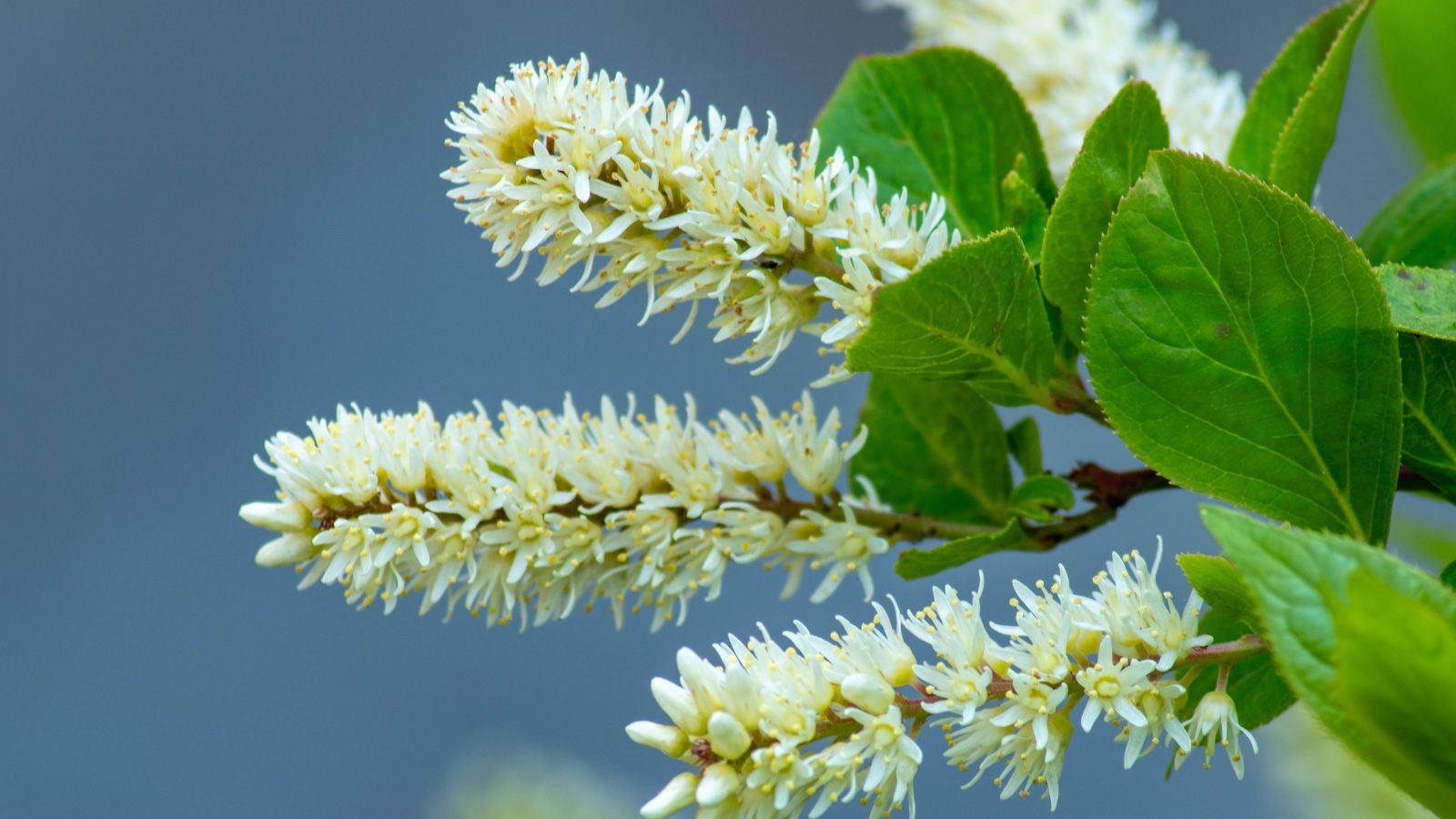
Seeds aren’t the easiest means of propagation compared to cuttings and root divisions. Sprouted seedlings keep well in a container for a year or more as they establish roots.
Collect ripened capsules in late summer or early fall and remove the tiny seeds. Direct sow them in a prepped garden area or nursery tray, covering them lightly with soil. If not the straight species, seeds don’t necessarily reflect the qualities of the parent variety.
Popular Varieties
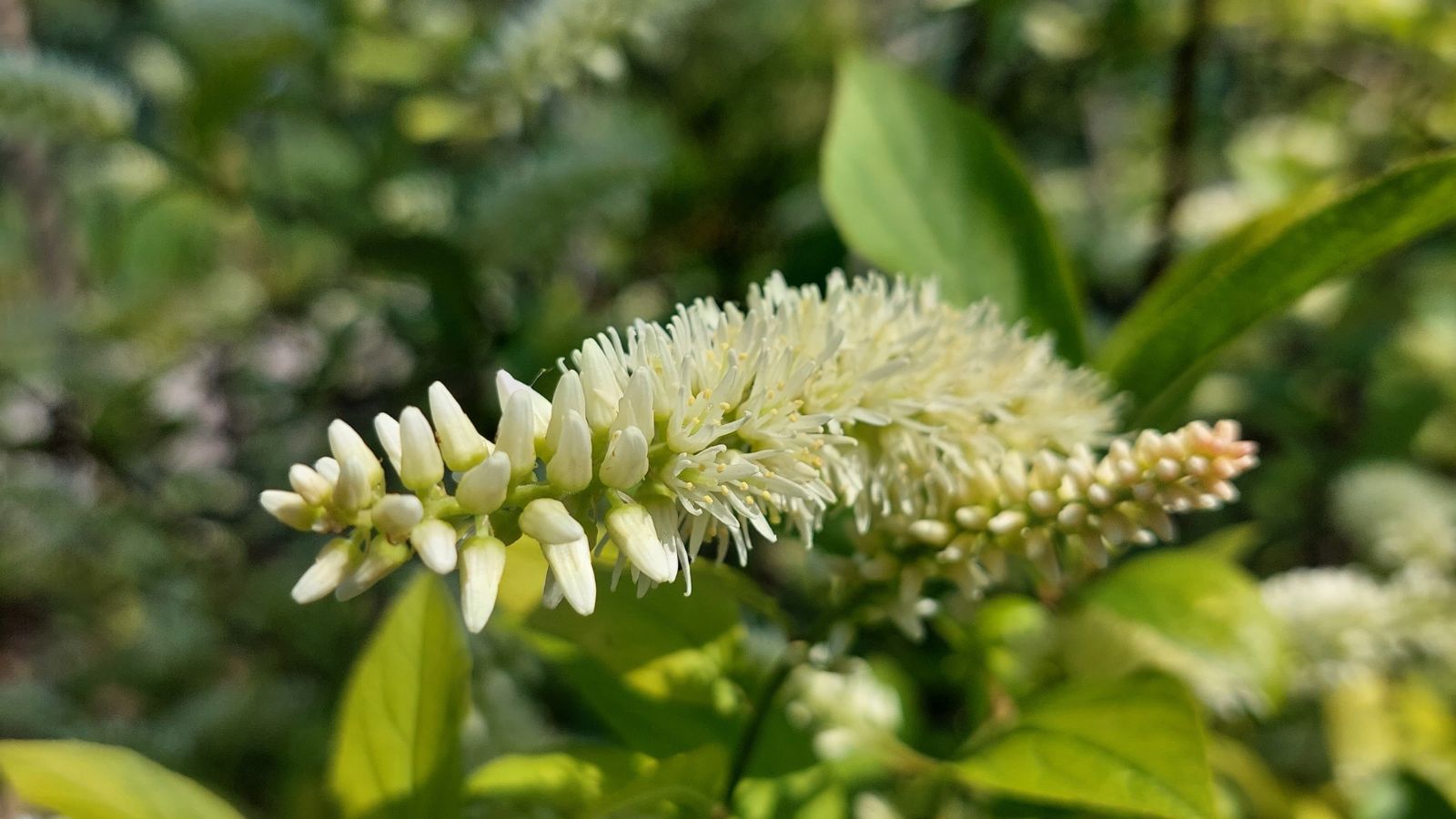
Sweetspire (I. virginica) cultivars and selections are particularly ornamental with more compact forms. The top performers and award-winners bring bold fall colors and a light fragrance.
‘Henry’s Garnet’
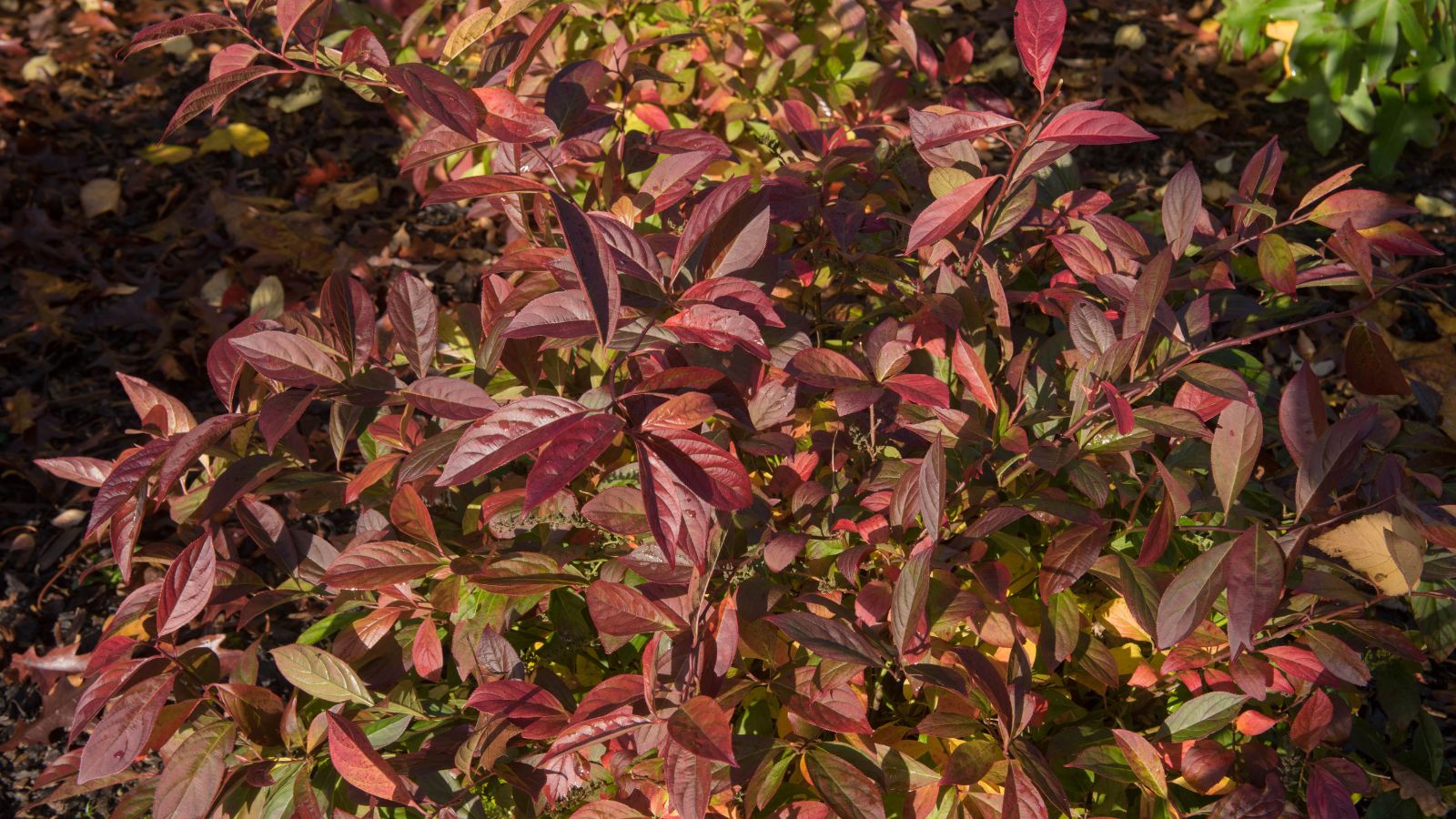
I. virginica ‘Henry’s Garnet’ boasts larger creamy white flowers than the species (to six inches long). It also has a richer fall color with deep red, burgundy, and purple shades.
This is a popular, reliable cultivar that Mary Henry collected from the wild in Coweta County, Georgia, in 1954. Mary Henry propagated it at her Henry Foundation for Botanical Research (a historical botanical garden) in Pennsylvania. It since achieved Award of Garden Merit status from the Royal Horticultural Society.
‘Little Henry’
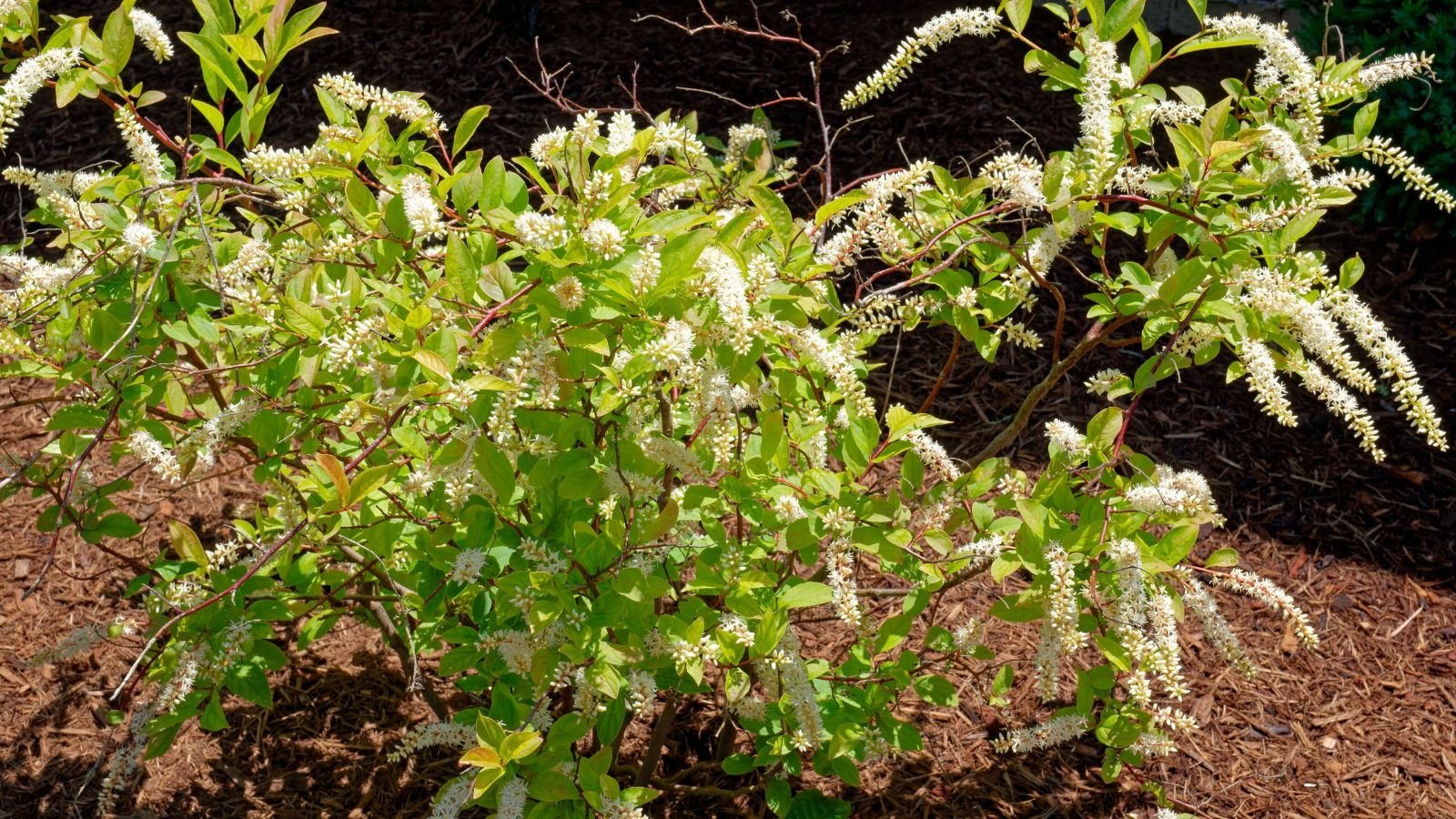
I. virginica ‘Sprich’ is a lower-growing selection at one and a half to two feet tall. Flower racemes in bright white are three to four inches long. Leaves turn blended shades of vibrant red-orange in the fall.
‘Little Henry’ has an improved, rounded form. This one grew as a sport off of its parent ‘Meadowlark.’
‘Fizzy Mizzy’
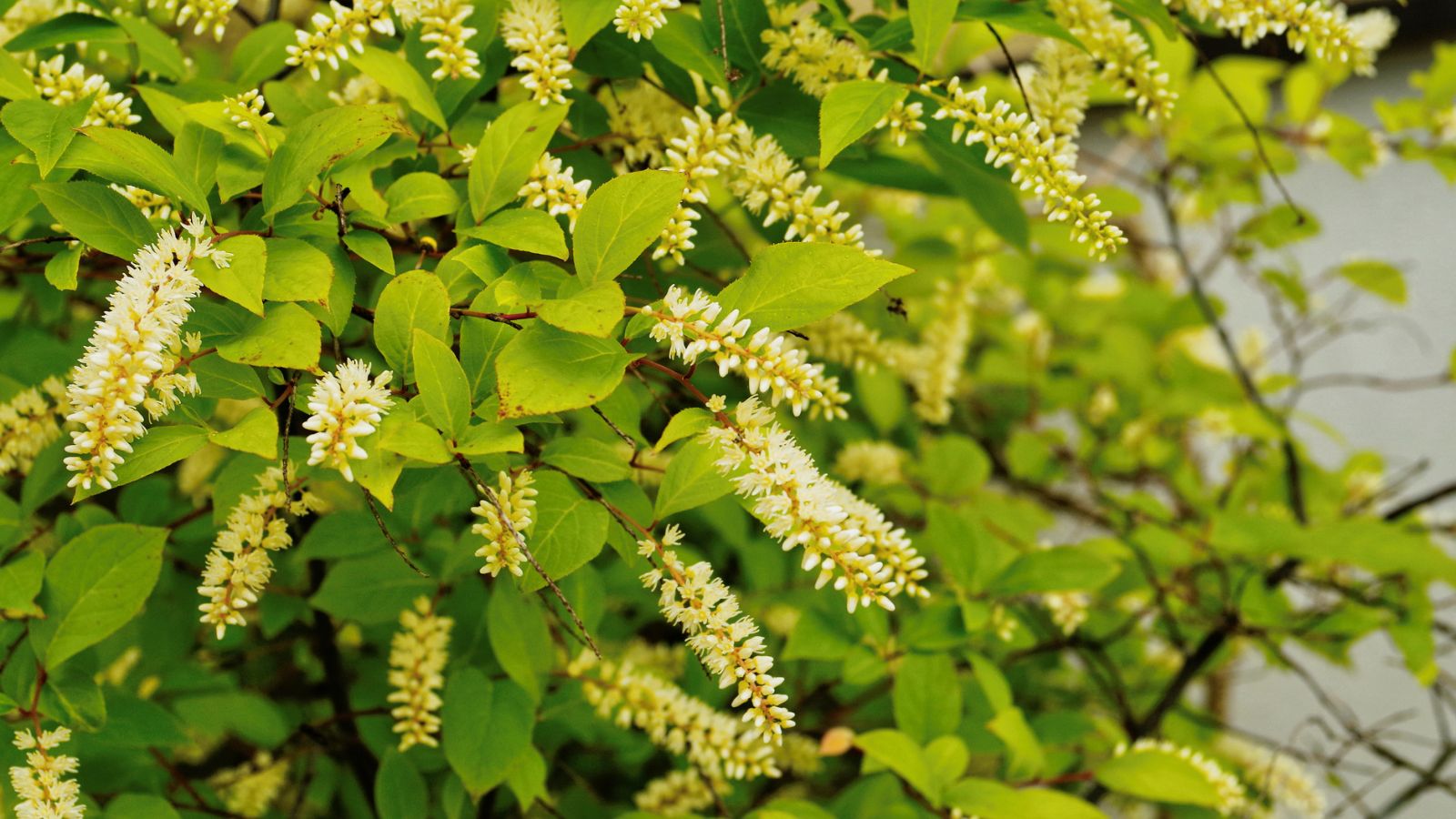
Itea virginica ‘SMNIVMM’ is a compact grower with distinctive upright flower spikes. The white flares carry a delicate fragrance and serve as a beacon for pollinators.
Foliage is handsome and thick on a tidy, dwarf form. Plants reach two to three feet tall for versatility in the landscape. Fall color is in scarlet and burgundy shades. This variety is patented and is, therefore, illegal to propagate.
Common Problems
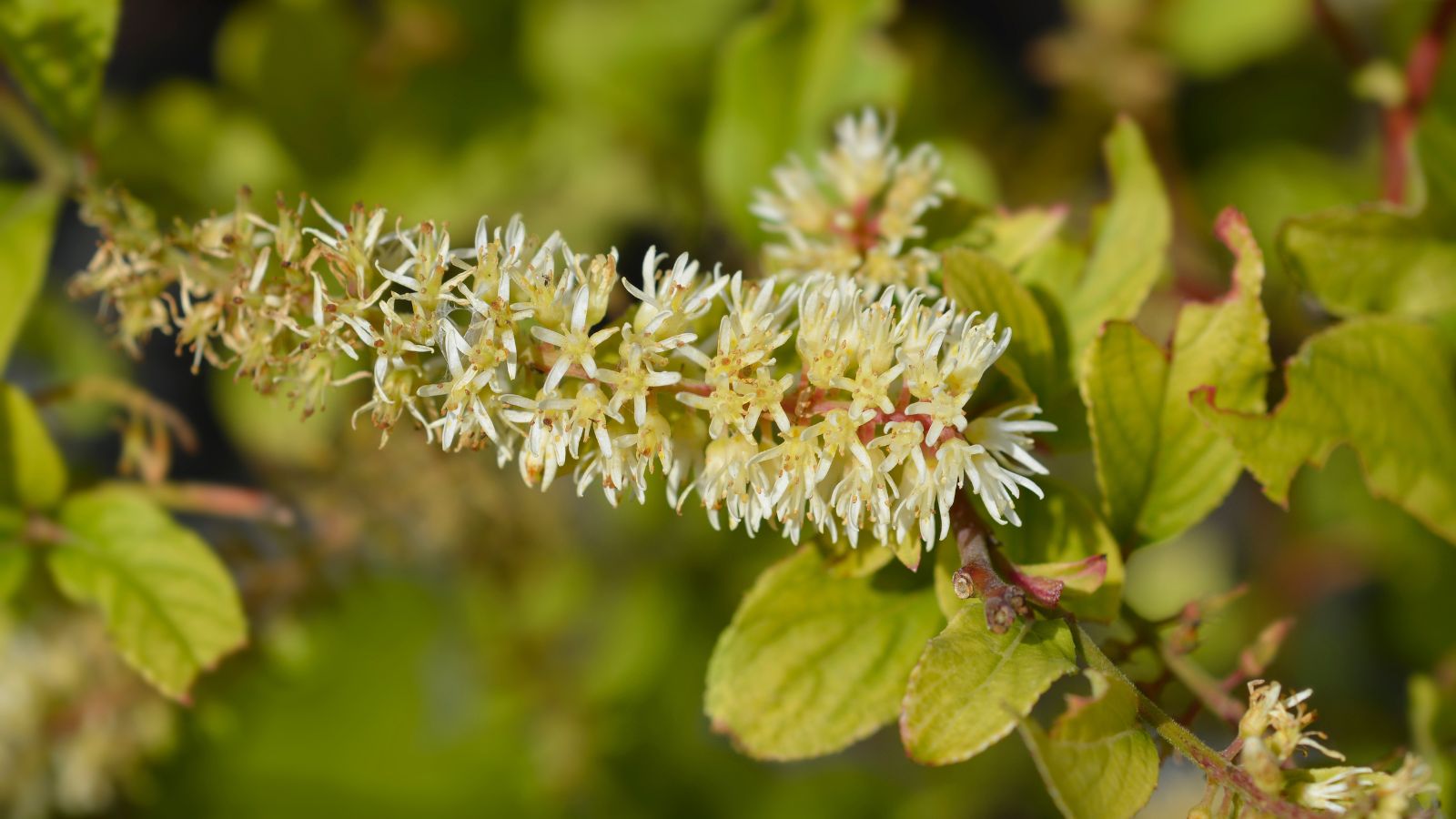
Sweetspire is free of most pests and diseases. Leaf spot is an unsightly cosmetic issue but rarely impacts overall health. Flea beetles are occasional visitors. The best control is prevention through maintaining optimal cultural requirements.
Pests
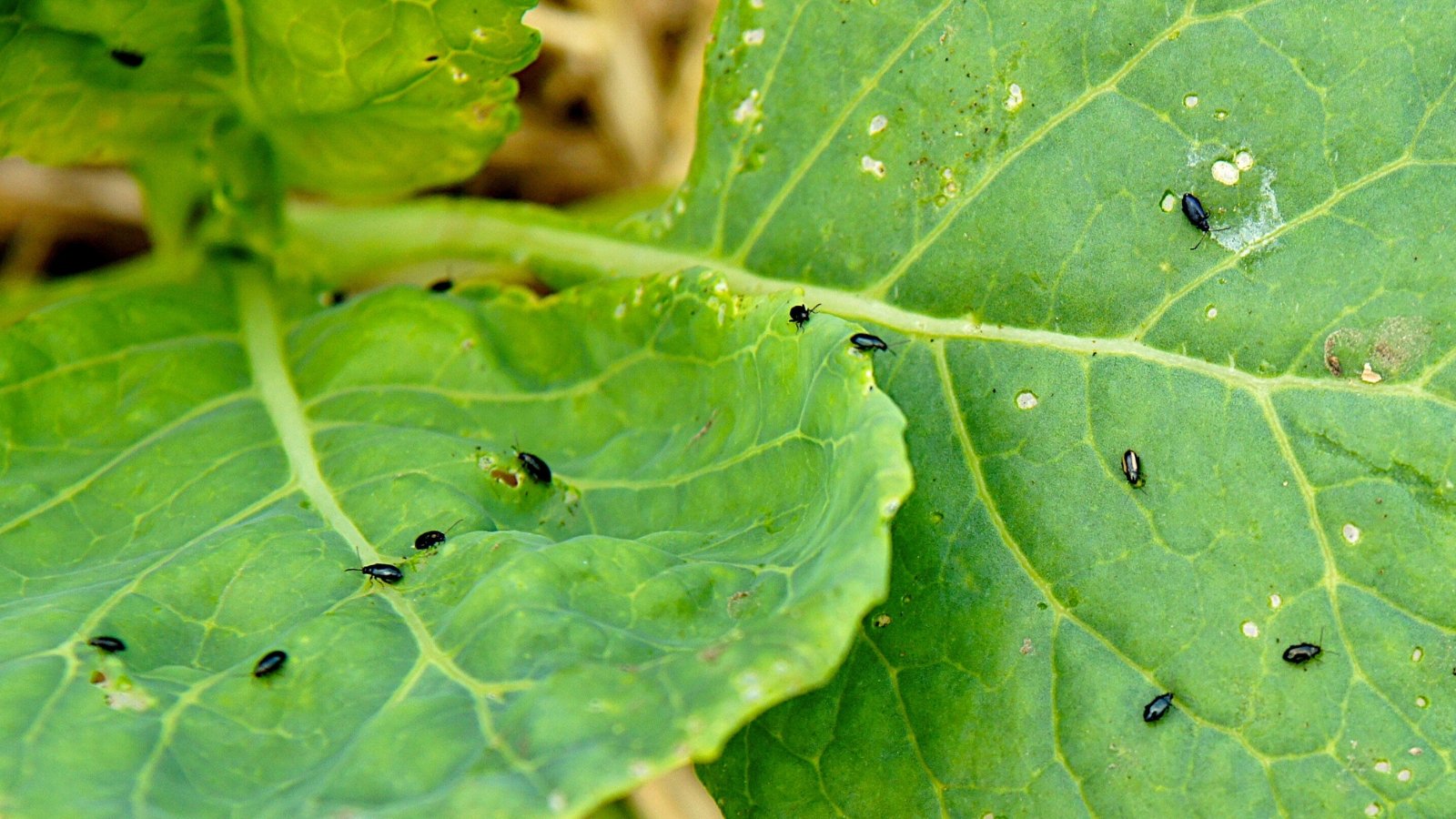
Flea beetles are small insects that hop from leaf to leaf, quickly skeletonizing foliage as they go. Most active in the spring, flea beetles are widespread across ornamental and food crops.
Adult flea beetles feed on tissues. They lay eggs beneath the soil surface, where larvae hatch to feed on tender roots. The larvae develop into adult beetles to feed on the plant. Leaf surfaces become mottled yellow and brown and may skeletonize, with only the veins remaining.
Organic treatments include horticultural oils like neem, though these impact beneficial insects as well. Diatomaceous earth applied to the leaf surfaces helps control outbreaks. Reapply DE after excessive humidity or rain.
Diseases
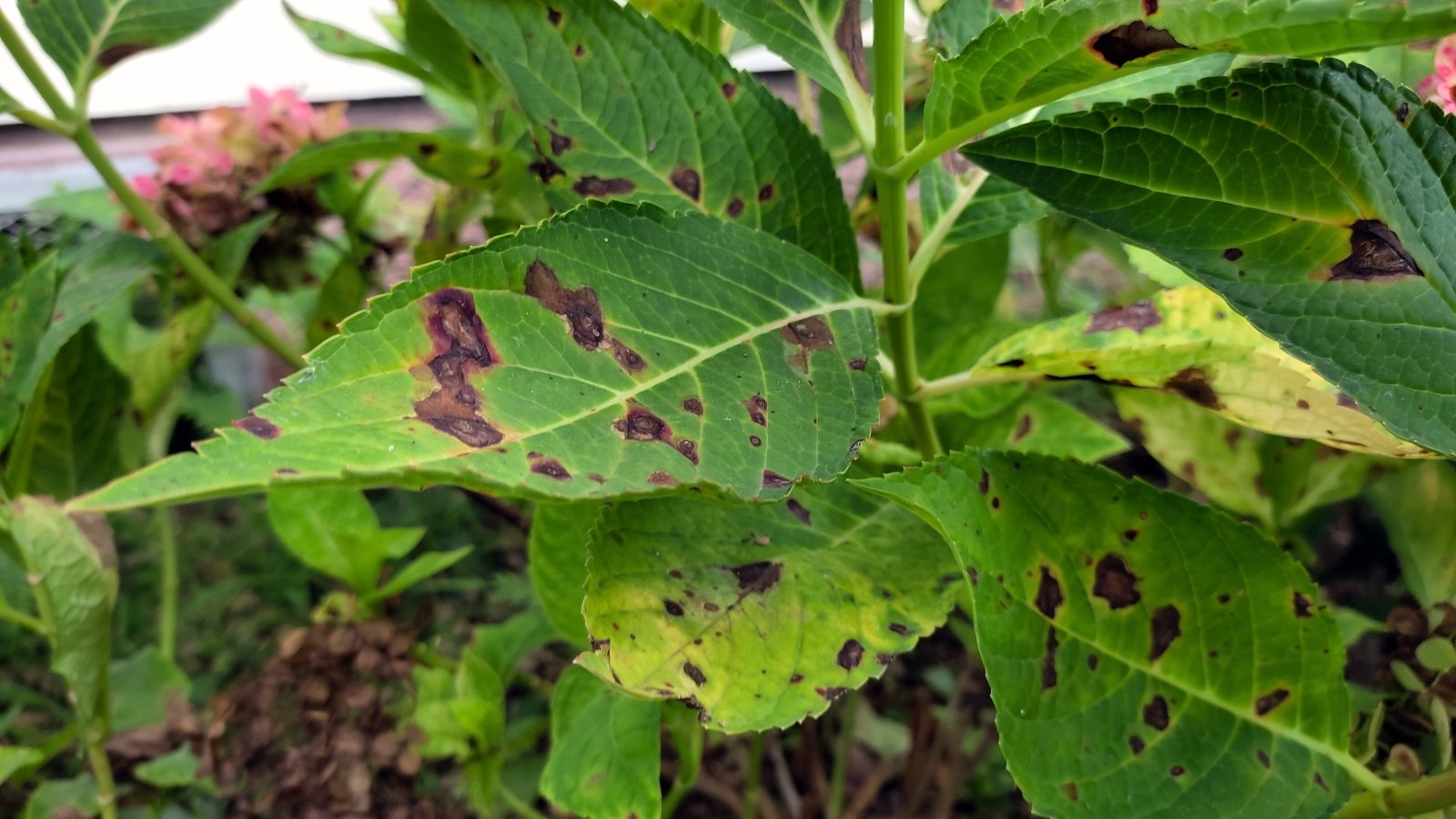
Leaf spot is an occasional issue for Itea, primarily Phyllosticta. The fungal infection manifests in gray or brown leaf spots that may cause yellowing and leaf drop. It occurs mainly in the cool and damp conditions of spring and fall or prolonged periods of wet leaves.
Avoid overhead irrigation if leaf spot is a problem and mulch to prevent soil splashing of fungal spores.
To treat leaf spot, remove damaged leaves (including fallen leaves) as feasible. Horticultural oils like neem can treat fungal diseases early on (but again, these impact beneficial insects, so be sure to follow application requirements). They have little effect once the condition sets in. Prune back growth to the base after flowering to allow for a new flush if warranted.
Frequently Asked Questions
The U.S. native shrub is not invasive. In the wild, it spreads through suckering offshoots to form thickets or colonies. If conditions are optimal and shrubs show spreading, keep them in bounds by pruning away suckers. Leave room around them at planting to allow for spreading infill if desired.
The durable natives don’t require intensive maintenance to grow and flower. They provide nectar and pollen for insects and seeds as forage for birds in fall and winter. They also offer shelter for birds and small mammals. Sweetspire grows across difficult sites like wet or clay soils. They perform well, too, on slopes and in eroded areas where spreading is an asset. This is in addition to their showy blooms and fall foliage.




